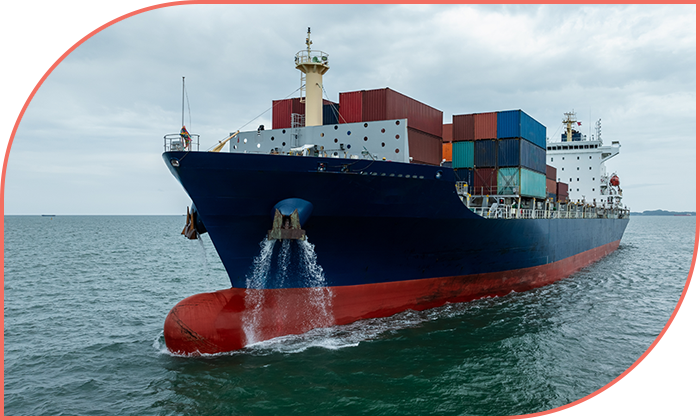Delivered at Place (DAP)
Delivered at Place Meaning
Under the Delivered at Place (DAP) incoterm, the seller is responsible for delivering the goods to a specified location, usually the buyer’s premises or another named place of destination.
The seller covers all costs and risks involved in bringing the goods to that location, excluding import duties and taxes, which are the responsibility of the buyer.
DAP Shipping Terms - How it works
DAP shipping means the seller assumes all liability and expenses associated with shipping the goods to the designated address.
They are in charge of export authorisation, packing, paperwork, loading fees, and final delivery. The risk and liability for unloading the products and obtaining import clearance then shifts to the customer.
It’s possible to use a delivered-at-place (DAP) arrangement for any kind of transportation or a combination of them.
DAP shipping obligations for seller
Packaging:
The seller must ensure that the goods are appropriately packaged for transportation.
Documentation:
The seller prepares all necessary export documentation, including commercial invoices, packing lists, and export licences.
Export approval:
With Delivered at Place, the seller arranges for export clearance and handles any customs duties and taxes applicable in the country of export.
Transportation:
The seller arranges and pays for the transportation of goods from their premises to the agreed-upon destination. Typically, this includes covering all transportation costs, such as freight charges, insurance during transit (if included), and any terminal handling charges.
Delivery:
The seller is responsible for delivering the goods to the specified place of destination, such as the buyer’s premises, a port, or another agreed-upon location.
DAP shipping obligations for buyer
Unloading:
The buyer is responsible for unloading the goods once they have arrived at the specified destination.
Import clearance:
The buyer handles the import clearance process, including paying any applicable customs duties, taxes, and import documentation.
Post-delivery transportation:
If the final destination is different from the point of delivery, the buyer arranges and pays for any further transportation required to move the goods to their final destination with the DAP Incoterm.
The Best Rate For Your Freight
Access real-time quotes from leading freight providers. Choose the best ocean and air shipping option for your business.
Delivered at Place insurance
The DAP Incoterm does not obligate either party to obtain cargo insurance. However, the majority of sellers exporting under DAP frequently choose to acquire insurance due to their substantial obligations.
Advantages of DAP shipping terms

Simplified logistics management:
The seller handles most of the logistics with a DAP Incoterm, including packaging, transportation, and export clearance.
Cost predictability:
With the seller covering transportation and delivery costs, the buyer can better predict and manage their expenses.
Risk management:
The buyer gets added security during the transit phase, as the risk of damage or loss is held by the seller until the goods reach the delivery point.
Potential for better shipping rates: Sellers, especially those with high shipping volumes, may be able to negotiate better shipping rates with carriers.
Shipping Made Simple: Compare Quotes Now
Quickly compare ocean and air freight quotes from multiple carriers. Get the most competitive price for your shipment.
Disadvantages of DAP shipping terms
Lack of control over shipping process:
Since the seller arranges transportation, the buyer has limited control over the choice of carriers, routes, and shipping schedules. This can be problematic if the buyer prefers certain carriers or routes for reliability reasons.
Dependency on seller:
The buyer depends heavily on the seller to manage the DAP shipping process. Any delays or issues on the seller’s end can impact the buyer’s operations.
Potential for higher costs:
The seller might include a margin on transportation and logistics services, potentially making Delivered at Place more expensive (compared to the buyer making their own shipping arrangements).
Customs clearance complexity:
While the buyer benefits from the seller managing export clearance, they still have to handle the import clearance process, which can be complex and time-consuming.
Risk after delivery:
Once the goods arrive at the agreed-upon location, all risks, including those during unloading and any subsequent transportation, are borne by the buyer. This shift in risk can lead to additional concerns if the unloading facilities are inadequate or if there are delays in customs clearance.

DAP Frequently Asked Questions
When is a DAP Incoterm typically used?
Delivered At Place is used when:
- The buyer prefers the seller to handle transportation and export formalities.
- Deliveries are to a specific, well-defined location.
- The buyer lacks expertise or resources in managing international logistics.
- The seller can secure better shipping rates or manage logistics more effectively.
What is the difference between DAP and DDP (Delivered Duty Paid)?
The primary difference is in the responsibilities for import duties and taxes.
Under DAP, the buyer is responsible for import clearance and associated costs. Under DDP, the seller handles all duties, taxes, and import clearance, making it a more comprehensive service from the seller's side.
Can DAP be used for all modes of transport?
Yes, DAP shipping terms can be used for any mode of transport, including sea, air, road, rail, or a combination of these.
What happens if the goods are damaged during transit under DAP?
The seller is responsible for any damage or loss until the goods reach the agreed destination and are ready for unloading. After that point, the risk transfers to the buyer with Delivered At Place.
How is the delivery location specified in a DAP agreement?
The delivery location is specified in the sales contract or shipping agreement. It should be a precise location where the seller is responsible for delivering the goods.
How does DAP compare to other Incoterms like FOB and CIF?
- FOB (Free on Board): The buyer assumes responsibility once the goods are loaded onto the vessel.
- CIF (Cost, Insurance, and Freight): Once the items are on board, the buyer bears the risk; the seller only pays for cost, insurance, and goods to the destination port.
- DAP (Delivered at Place): The seller is responsible for delivering the goods to a specified location, covering all costs and risks until delivery.
Get The Best Freight Rates Today
Easily compare rates from top ocean and air freight carriers. Save time and money on your next shipment.rn